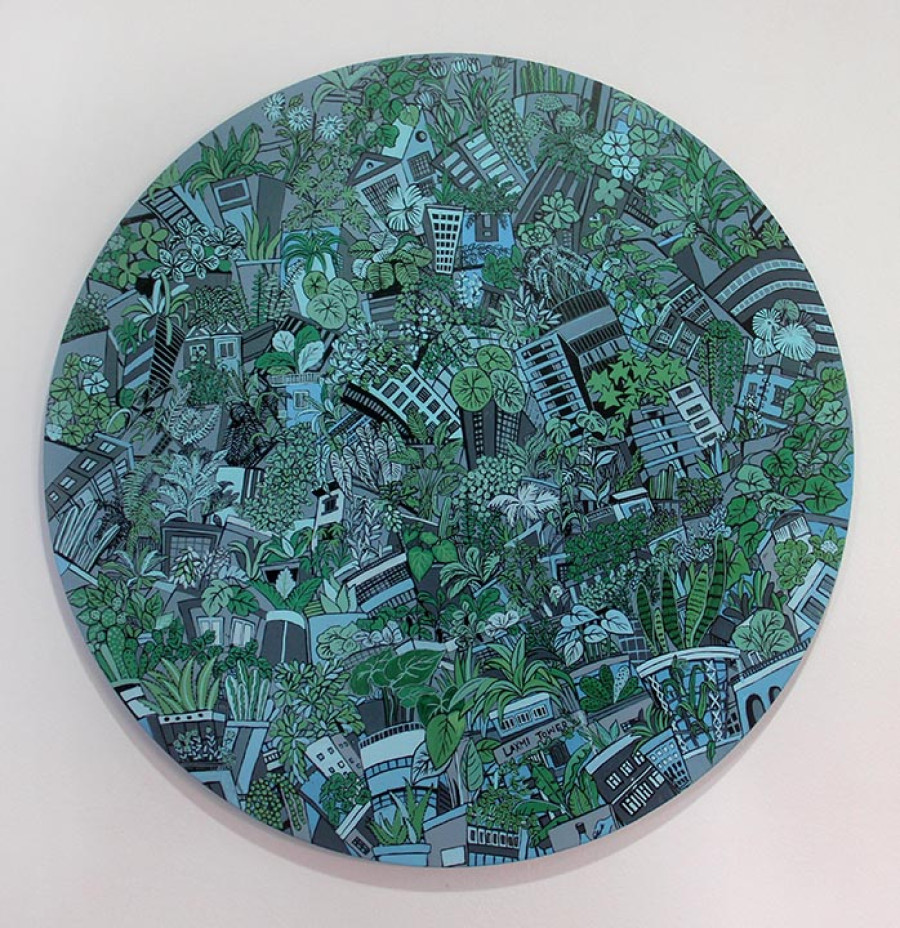Columns
The urban village model’s promise
Amid the ever-changing urban landscape, there is a way to embrace nature and the warmth of community.
Avani Adhikari
What do we imagine when we think of cities? For most, cities conjure images of concrete and cement, of tall buildings and crowded streets. Cities are imagined to be huge, modern and anonymous—the opposite of the tight-knit and environmentally conscious communities in the home village of most Nepalis. Yet, a growing number of urban planners have been advocating a form of urbanisation that goes contrary to the popular imagination of cities. Calling it the “Urban Village Model”, planners believe that this medium-density and pedestrian-friendly planning can create a sustainable living environment while preserving and engendering strong community bonds within its residents.
The urban village model makes a distinction between rural (grameen) and villages (gau). Villages are administrative units with low population and population density over a small area, with a predominant agricultural industry, whereas rural denotes any community with non-urban characteristics. Areas inside cities can also be considered rural if they are sparsely built and have ample green spaces. Such a model seeks to evoke a sense of rural communities by building self-sustaining neighbourhoods centred around green public spaces, sustainable transit and mixed-use zoning. The idea is to conveniently place every necessity like schools, hospitals or shops in your urban village.
The urban village model is not new in the long history of city planning and stems from the inherent paradox urban planners face. By profession, we are champions of urban spaces, pushing for the modernism and industrialisation of our towns and villages. Yet, humans naturally desire to be around open green spaces and idyllic rural communities. This stems from the contradiction: We like rural spaces, but our work of developing them means we inadvertently change their dynamics. Planners build roads, housing spaces and commercial units, which increases the village’s sprawl congestion and eradicates its green spaces until the community becomes an unrecognisable urban space.
To reconcile such contradiction, planners continue to ask themselves the same question—can there be another urbanisation model where development doesn’t come at the price of communities? In the early 1900s, it was called “The Garden City”; in the 50s and 60s, it was the “Utopian” and “City Beautiful Movement”; in the modern era, we have the “New Urbanism Movement” and the “Urban Village Model”. These ideas are so old that we hardly even think about the cities that were influenced by them; for instance, Chandigarh in neighbouring India was planned by French-Swiss architect Le Corbusier, considered a pioneer of the City Beautiful Movement. Such instances were incredibly influential in planning thought, and each had failings and criticisms. These failings further embolden planners who believe the urban village model is the only way to build sustainable and resilient communities for the uncertain future.
Although Nepal’s industries are nascent, we sit between two giants with sophisticated planning communities where debates about urbanisation’s future rage fiercely. China is experimenting with “urban-rural reunification”, building the world’s first garden megacity in Chengdu where “you will see green every 300 metres''. As we saw from Chandigarh’s case, India has a long history of experimental green planning, which the country attempts to replicate in Bangalore and Ahmedabad. Hence, it is only a matter of time before these winds of change make their way to Nepal. But in a country where villages are rapidly disappearing due to dwindling populations, encroaching urbanisation, and the chaos of our cities has been entrenched with brick and cement, what can this even look like?
With most of our city centres built haphazardly, introducing any new change will be a monumental task in terms of engineering and politics. To pursue urban villages in the short term, it must be implemented in new peripheral communities emerging around existing cities. Villages surrounding our cities are already self-sustaining units that can be converted into small urban villages if properly developed. However, to ensure the success of any new urban villages, planners need to mitigate the two primary reasons for the decline of Nepali villages—strict laws must prevent land speculators from converting agricultural land and green spaces into housing, and these peripheral villages must be connected to city centres with fast and convenient rapid-transit like trains and buses.
Chandigarh utilised this model in the 60s—the city was created from scratch by merging 10 villages in the area and converting them into an urban space. Today, the city has one of the highest Human Development and Happiness Index in India. With a modern-day population equivalent to Kathmandu, Chandigarh’s success in our backyard 60 years ago should encourage us to achieve the same outcome in Nepal. The urban village model reminds us that amid the ever-changing urban landscape, there is a way to embrace nature and the warmth of the community. Our imagination is limited to the concrete jungle only because we let it—another world is possible as long as we desire it.




 8.12°C Kathmandu
8.12°C Kathmandu













%20(1).jpg&w=300&height=200)

